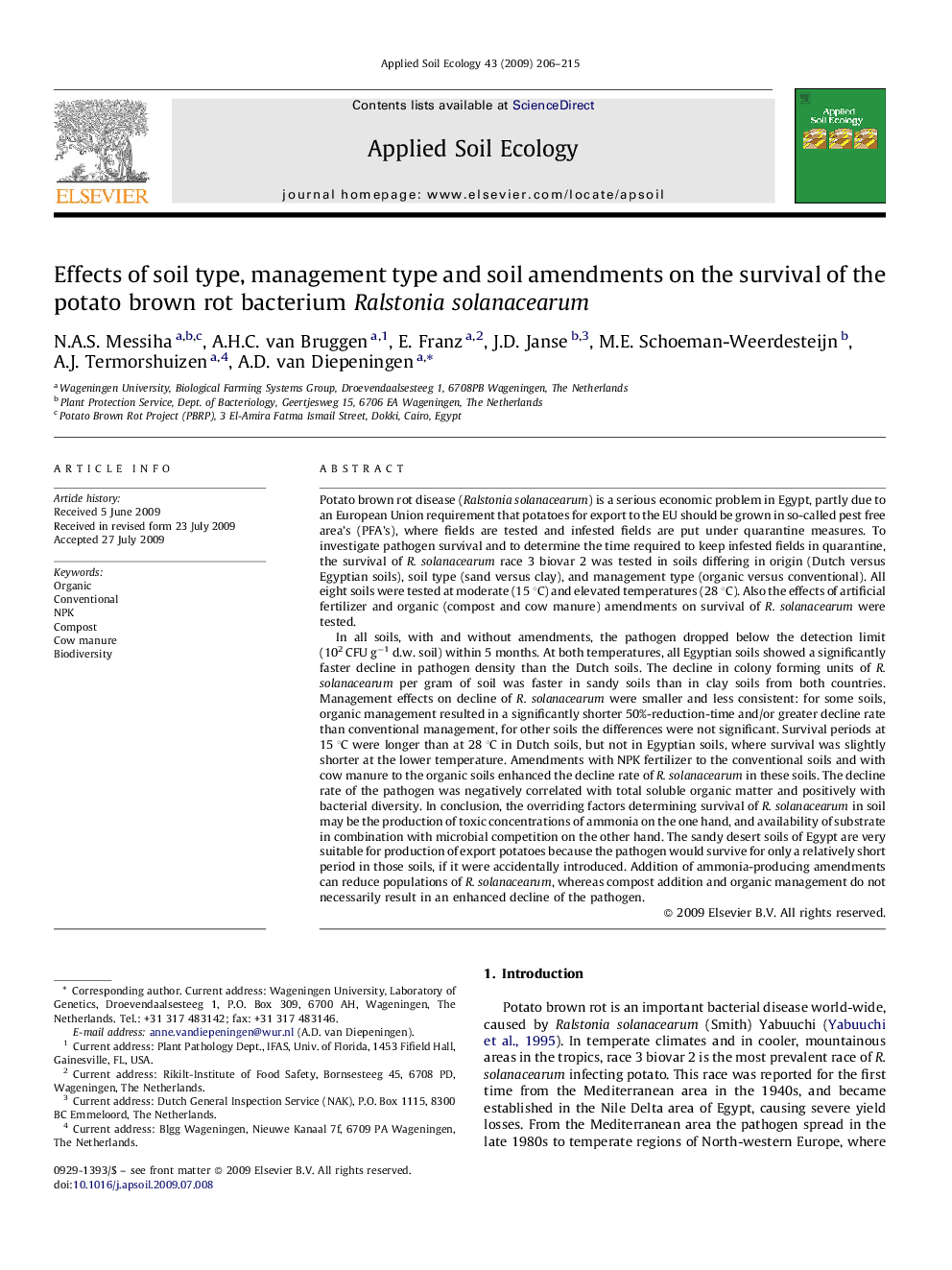| Article ID | Journal | Published Year | Pages | File Type |
|---|---|---|---|---|
| 4383066 | Applied Soil Ecology | 2009 | 10 Pages |
Potato brown rot disease (Ralstonia solanacearum) is a serious economic problem in Egypt, partly due to an European Union requirement that potatoes for export to the EU should be grown in so-called pest free area's (PFA's), where fields are tested and infested fields are put under quarantine measures. To investigate pathogen survival and to determine the time required to keep infested fields in quarantine, the survival of R. solanacearum race 3 biovar 2 was tested in soils differing in origin (Dutch versus Egyptian soils), soil type (sand versus clay), and management type (organic versus conventional). All eight soils were tested at moderate (15 °C) and elevated temperatures (28 °C). Also the effects of artificial fertilizer and organic (compost and cow manure) amendments on survival of R. solanacearum were tested.In all soils, with and without amendments, the pathogen dropped below the detection limit (102 CFU g−1 d.w. soil) within 5 months. At both temperatures, all Egyptian soils showed a significantly faster decline in pathogen density than the Dutch soils. The decline in colony forming units of R. solanacearum per gram of soil was faster in sandy soils than in clay soils from both countries. Management effects on decline of R. solanacearum were smaller and less consistent: for some soils, organic management resulted in a significantly shorter 50%-reduction-time and/or greater decline rate than conventional management, for other soils the differences were not significant. Survival periods at 15 °C were longer than at 28 °C in Dutch soils, but not in Egyptian soils, where survival was slightly shorter at the lower temperature. Amendments with NPK fertilizer to the conventional soils and with cow manure to the organic soils enhanced the decline rate of R. solanacearum in these soils. The decline rate of the pathogen was negatively correlated with total soluble organic matter and positively with bacterial diversity. In conclusion, the overriding factors determining survival of R. solanacearum in soil may be the production of toxic concentrations of ammonia on the one hand, and availability of substrate in combination with microbial competition on the other hand. The sandy desert soils of Egypt are very suitable for production of export potatoes because the pathogen would survive for only a relatively short period in those soils, if it were accidentally introduced. Addition of ammonia-producing amendments can reduce populations of R. solanacearum, whereas compost addition and organic management do not necessarily result in an enhanced decline of the pathogen.
